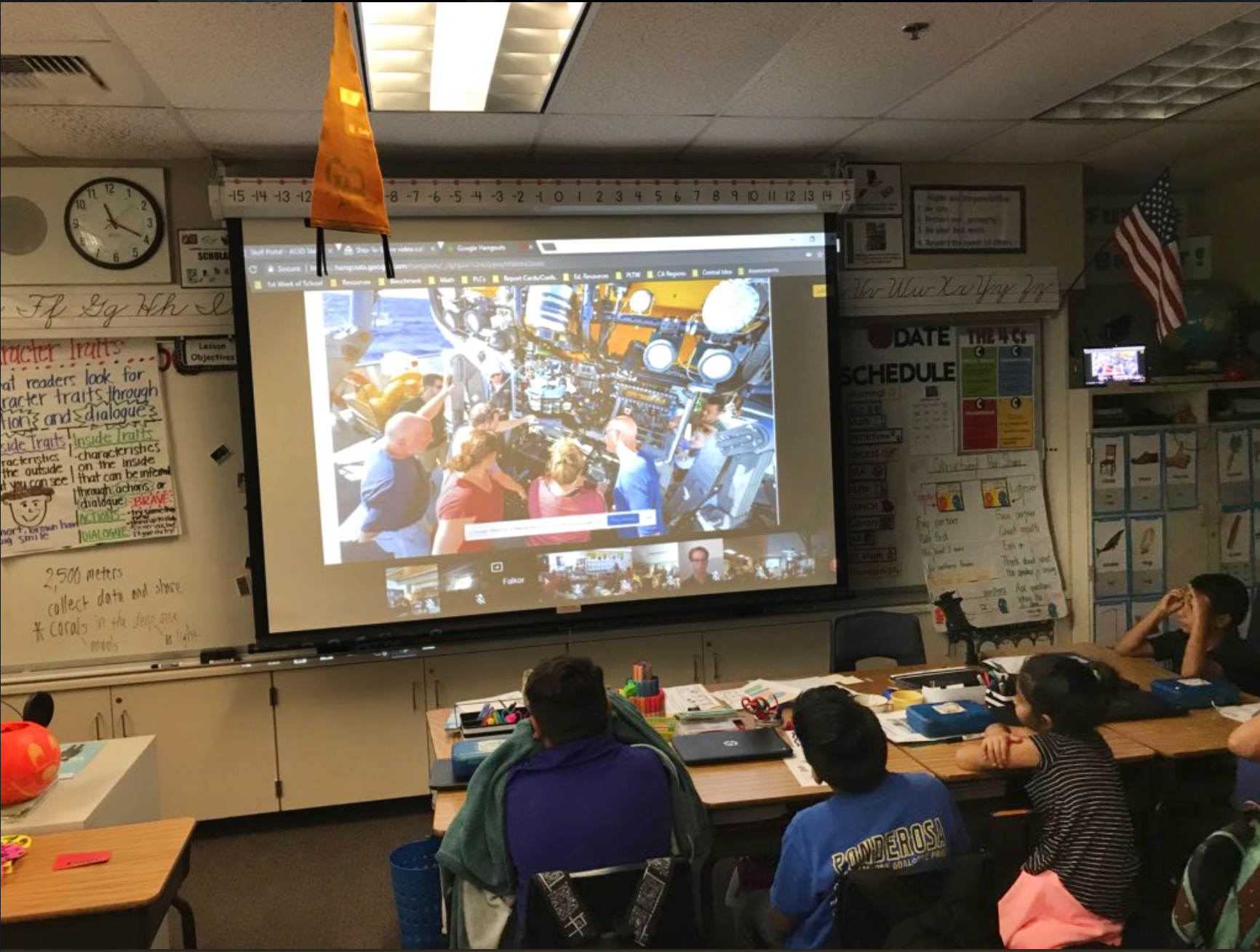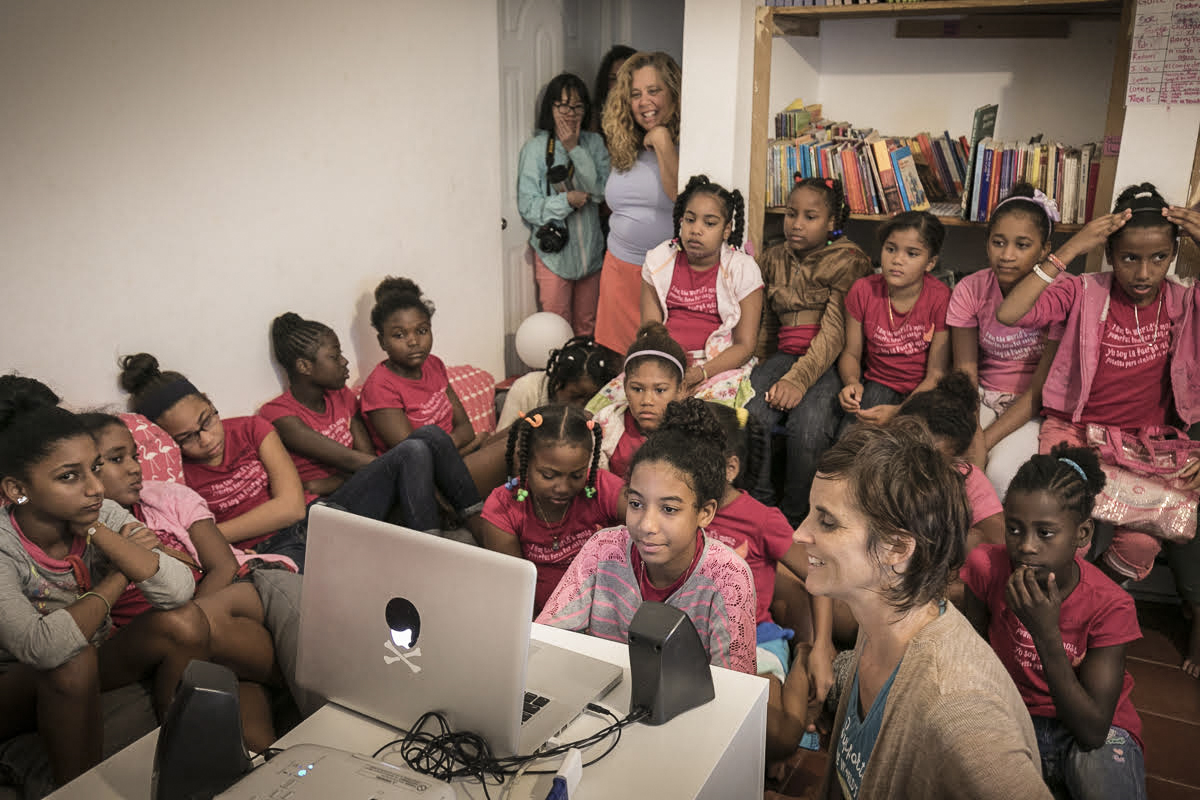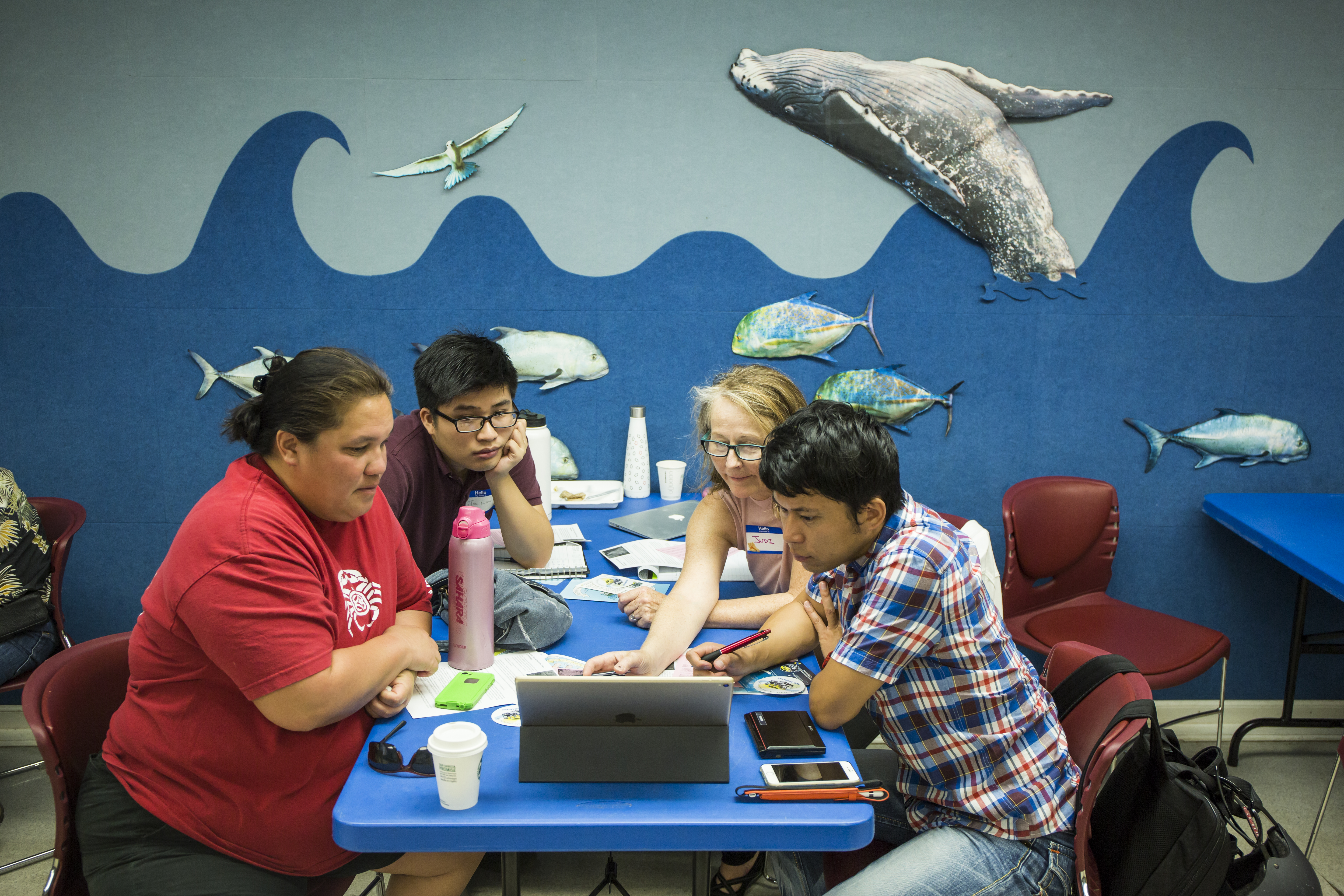Outreach to the communities that we work in is a priority for Schmidt Ocean Institute, and the reason is quite simple – open sharing of information matters very little if no one knows or cares about it. Our commitment to bringing ocean science to the public is supported by an array of programs, trainings, broadcasts, and social media campaigns that encourage and facilitate engagement between participating researchers and the public.
Expedition Outreach
In 2017, scientists, artists, and scholars aboard the Falkor connected with over 3,000 students in locations such as Hawai’i, Guam, Dominican Republic, Scotland, and Australia through our live Ship-to-Shore video call program. This year, new collaborations with Exploring By The Seat Of Your Pants, United States National Aeronautics and Space Administration (NASA) Globe Educators, and Sustainable Coastlines Hawai’i provided an opportunity for us to reach more classrooms and communities than ever before.
We also continued our World Ocean Day tradition hosting a tri-ship Hangout online with NOAA’s Okeanos Explorer and Ocean Exploration Trust’s E/V Nautilus. This year our expeditions were also featured in an online program through Oregon Coast Aquarium’s Oceanscape Network, reaching over 24,000 people, making it the most viewed virtual expedition on Oceanscape to date.
Schmidt Ocean Institute works with a team of very talented multimedia correspondents who connect scientists and crew to the rest of the world through regular blogs, social media content, and weekly videos. Over 400,000 pages have been viewed on the SchmidtOcean.org website this past year, from nearly every country in the world. It has been an honor to feature blogs written by student participants, scientists, and artists, and Schmidt Ocean Institute will continue hosting science communication training sessions for science teams, encouraging and facilitating this kind of public engagement. Showcasing the cutting-edge research undertaken aboard Falkor led to over 940 news stories in 2017, including national and international television, radio, print, and web publications. Some highlights include SOI research featured in articles from National Geographic, Wired, Scientific American, NASA TV, and Nature.
This research was shared with technical and public audiences, as well as through presentations, booths, and trainings reaching more than 260,000 people. Notable examples of this included a panel on how technology can save the oceans at the International Ocean Film Festival, a seminar for staff at the Jet Propulsion Laboratory, and hosting a lecture series at both Hanauma Bay Education Center and Waikiki Aquarium.
Our vision is to talk about ocean research in ways that reach people where they live – whether they are a student, researcher, scientist, artist, or farmer. It doesn’t matter what you do or where you are, this is your life support system
— Wendy Schmidt
Livestream Video
2017 was a record-breaking year for our live video presence. ROV SuBastian made 47 dives, resulting in over 465 hours (19 days) worth of footage, all of which was streamed live to YouTube and maintained as a publicly accessible archive. This year alone, more than 260,000 people tuned in to livestreams, blogs, and our new 4K video highlights on YouTube, nearly three times more than in 2016.

This year we also began streaming ROV SuBastian dives to Facebook Live, attracting more than 3 million viewers and pick-ups by external groups such as IFLScience. The live, breathtaking footage from some of the most remote places in the world was selected and used for educational video initiatives, such as the BBC’s Oceans, The Weather Channel, Discovery Channel Canada, and NHK documentaries. ROV footage was even showcased at the Berlin Atonal Festival and the International Ocean Film Tour. These livestream events are an invaluable way to involve large numbers of people from all walks of life in ocean research.
Student Training
Schmidt Ocean Institute offers berths of opportunity to undergraduate and graduate students who require at-sea research experience. Encouraging these students to work with and learn from experts, has shaped their career outlooks and continues to be a valuable experience. Falkor has hosted 125 students from 55 universities in 16 countries since the start of operations in 2012, including 13 students brought aboard through the Student Opportunities Program and several on-shore Science Communications Internships. Student Opportunities participants reported increased confidence and interest in ship-board research, equipment, methods, and data. Exposure to blog writing and ship-to-shore calls while on board also greatly increased students’ comfort and interest in science communication and writing.

Our Falkor-inspired lesson plans created by Jena Kline, a teacher who sailed on Falkor, feature real multibeam and ROV video data to provide further enrichment for classrooms engaging with the scientists on board. These lessons were shared at a teacher workshop that we hosted at the Waikiki Aquarium to further support and engage educators connecting to the ship.




